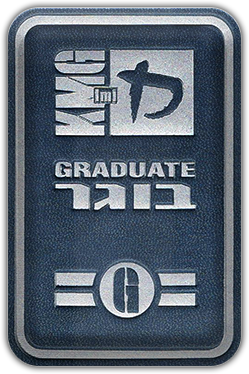Against a continuing attacker, in case the defender failed in neutralizing the ability of the attacker to continue an attack…





 G2 Training Program
G2 Training Program
Against a continuing attacker, in case the defender failed in neutralizing the ability of the attacker to continue an attack…
Video transcript
Against a continuing attacker, in case the defender failed in neutralizing the ability of the attacker to continue an attack. This can be because the attacker made a defense or just the counterattacks weren’t good enough. Attacker continues after … Here is regular kick, with defenses, with other attacks. The defender has to continue after his initial defense and initial counterattacks that were not sufficient enough to defend counterattack and use his tools accordingly. As needed, the defender needs to continue with the relevant additional defenses, counterattacks, all in order to finish the situation.
Here, defending a sidekick. In this case, according to the same guidelines, the defender did not manage to solve the problem at the early stage and the attacker continues. Attacker continues here with turning around, spinning and delivering another attack. Practically the attacker continues to deliver attacks as he feels, and according to the situation. The defender has to proceed as soon as possible with the additional defenses and counterattacks. According to the principles, practically the defender defenses, counterattacks and then has to defend again and counterattack again, until the danger is no longer.
Against an attacker who stabs with a stick, one of the options is defending an inside defense with a palm, moving diagonally forward, kicking, controlling the weapon and counterattacking. However here, the defender didn’t manage to succeed completely. Managed to defend well, to counterattack partly, not to have so good control, and the attacker continues. According to the situation, the attacker attacks what is comfortable for him. Meaning an attack sideways to where the defender moved to. Sort of a horizontal attack, partly stabbing, partly swinging the weapon. The defender continues with the relevant defense here, and outer defense with the fleshy part of the forearm. Continuing with counterattacking, with controlling.
Again, all is according to the situation, to the dynamics of the incident. We’re practically using the principals, the techniques, the variations that you are used to. The main thing in the subject of continuing attacker, one has to recuperate fast, to decide early, to change his actions in order to foil the attacks, the behaving of the attacker, the danger.
Defending against an over a stick attack. According to the guidelines of the returning attacker, the defender didn’t manage to neutralize the problem. The hand defense went well, the body defense went well. The counterattacks didn’t stop the attacker, so attacker continues. What is left for the defender? To continue too. Meaning, now the defender needs to deal with what is coming. While delivering counterattacks, moving correctly, the defender also uses double hand defense against the swing of the stick. Attacker after the swing from above continues with the horizontal swing. The defender, with two forearms, defend counterattacks, and eventually solves the problem. Naturally, the tactical behaving of the finishing mode, the post fight, should be applied. Here, moving away from the danger zone, with or without disarming the attacker.

A. Spinning Attacks, Strikes and Kicks
C. Sliding Defense Against a Straight Punch
Notes: Both defenses are done with the front hand against the opposite hand (i.e. - left vs. right).
D. Double Hand Defense Against Kicks of an Unknown Height
E. Defense Against One-Handed Shirt Grabs
F. Escaping From Two-Handed Shirt Grabs
H. Defending Against Knife Attacks - Straight Stabs
Note: Practice techniques 1 and 4 from a passive stance. Start practicing techniques 2 and 3 from an appropriate ready stance. In the later stages, practice from a minimized ready stance. All without returning to the initial channel of attack
I. Defense Against Slashing Knife Attacks
J. Defending Against a Straight Stab or Thrust with a Stick
K. Dealing with a Continuing Attacker – Whilst Defending Against Different Kicks
Note: see G-1 for more information about protective and safety gear.
1. Escaping a One-Handed Shirt Grab